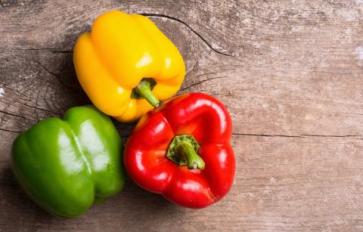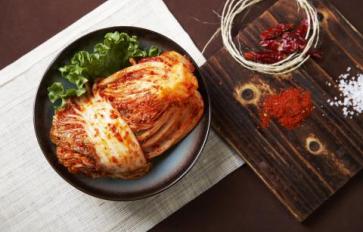
Now that you are making more breakfasts at home using healthy ingredients, let’s take a look at dinner. Instead of grabbing that package of organic macaroni and cheese or other “helper” products that allow you to make a meal in a skillet, try creating your own sauces or pastas. Once you get comfortable with the process, you’ll find you can whip up dinner in record time.
1. Gravy
If you can make gravy, you can make a skillet meal. I am allergic to corn, so this quick and easy method uses arrowroot powder instead of cornstarch. Mix a heaping teaspoon of arrowroot powder into three teaspoons of tepid water (preferably filtered). In a separate saucepan, heat 1 tablespoon of coconut oil (or an oil of your own preference), ghee or butter. Add diced onion and a clove of garlic and cook until onion is translucent, but not overly brown. Add approximately 2 cups of broth (beef, chicken or vegetable) and heat. Whisk in the arrowroot/water mixture, which is now thickening in your container. Stir until the mixture is blended and the gravy starts to thicken. If you find the gravy to be too thick for your liking, simply add more water. Season to taste.
Inspiration for these recipes:
2. Noodles
Noodles are so easy you’ll wonder why you never tried them before. Here is a basic recipe for no-egg noodles:
Measure one cup of unbleached flour and pour into a large mixing bowl. Mix in ½ teaspoon of salt and a teaspoon of olive or other light oil. Slowly add about ½ cup warm filtered water, mixing as you add. You will have to mix with your hands as the dough forms. Don’t add too much water, or the dough will become sticky. You want a dough that feels good in your hands and holds its shape. If you find you have added too much water, simply dust with more flour and blend until the dough is no longer sticky.
Don’t overdo the kneading, though – you want a soft, tender noodle at the end.
Let the dough rest for 5 minutes.
Then cut the dough ball into a few smaller pieces, and roll each piece out on a well-floured board. Roll to a thickness of approximately 1/8 inch. The dough will puff up when you cook, and a thicker noodle will need a longer cooking time.
Cut the rolled dough into thin strips, and then cut the strips into similar length noodles.
Heat a pot of water or broth on the stove (you will need enough liquid to cover the noodles). Once the liquid is boiling, add the noodles. Using a wooden spoon, gently “nudge” the noodles so all are covered completely by the boiling liquid.
Allow the noodles to cook approximately 7 minutes, or until the noodle is cooked through and tender.
You can dry the noodles before cooking, if you want to make extra and save for another meal. Simply spread the noodles on a flat surface and make sure they are not touching each other. Cover with a thin cloth and allow them to dry completely. Store in a glass jar in the refrigerator.
You can find other more intricate recipes on the Internet, and since noodles have been around for a long time, every culture has its favorite. But I use this basic recipe to make noodles when I have a tight food budget and little time.
3. “Helper” meals
Now you know how to make the basics of a “helper” skillet meal! Prepare a very thin gravy or sauce in a skillet and allow it to gently boil. Add fresh or dried noodles and cook as usual until they are tender. Add cubes of meat, vegetables, or cheese and heat. Season to taste and serve!
No preservatives, and very few ingredients – and you will smile knowing you made everything without a box.








